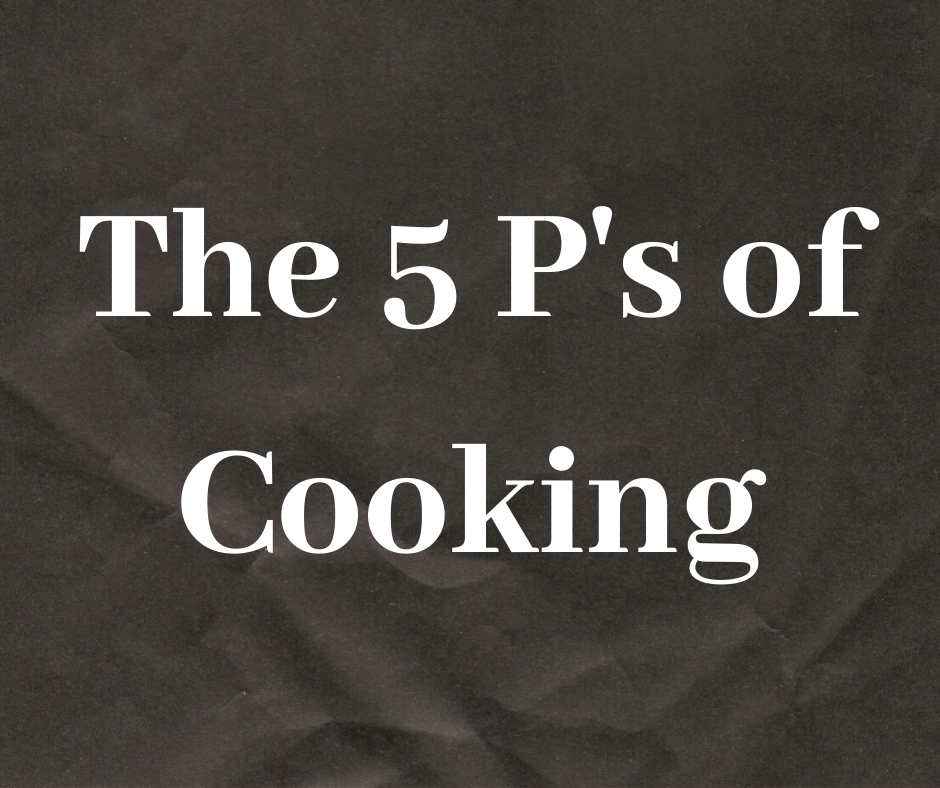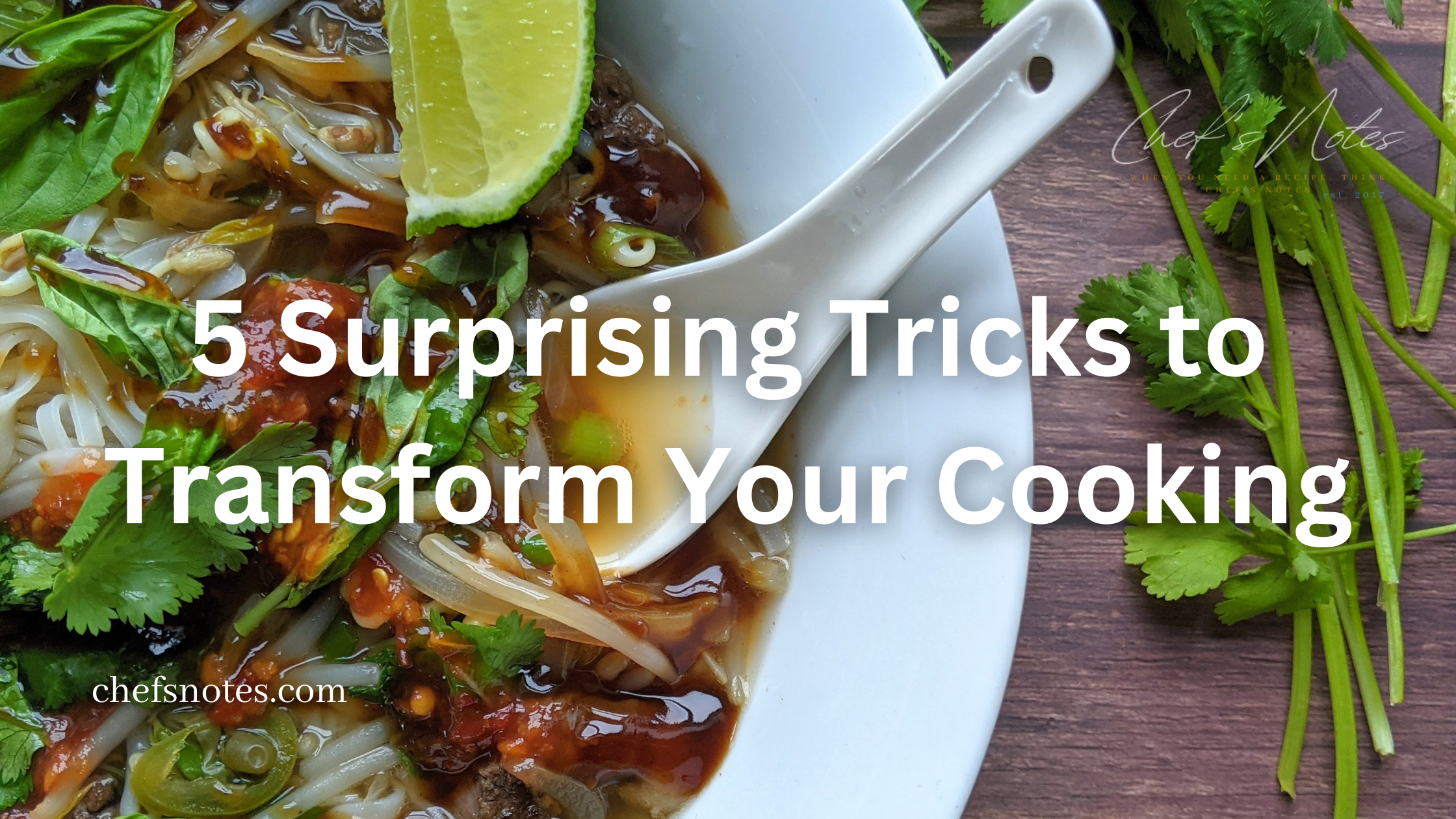Are you tired of producing mediocre meals? Are you ready to take your cooking to the next level? Look no further! These 5 surprising tricks will revolutionize the way you cook and impress your friends and family with delicious, restaurant-quality dishes. Best of all, they’re easy to implement and won’t require any fancy equipment or hard-to-find ingredients. So get ready to transform your cooking and become the master chef of your kitchen!

1. Learn to taste

The simple act of tasting your food as you cook is the most effective way to improve the quality of your dishes. Tasting isn’t just about determining if your food tastes good – it also helps you identify and correct any deficiencies in your recipes. For example, tasting can help you determine if a dish needs more salt, acid, or sweetness to bring out the flavours. It can also help you detect if a dish has too much of a particular ingredient, such as herbs or spices, which can overpower the other flavours.
When should you taste your food?
Make a habit of tasting everything you can, including vegetables, sauces, soups, and starches before serving. Don’t be afraid to taste and adjust the seasoning multiple times, especially with soups and sauces. The more you taste, the more you’ll learn about the flavours and how to balance them in your dishes.
When it comes to vegetables and starches, it’s best to taste them just before serving. Cook them, season them, taste them, adjust the seasoning as needed, taste them again, re-adjust if necessary, and taste one more time before serving. This will ensure that the flavours are well balanced and the seasoning is just right.
For soups and sauces, it’s a good idea to taste and adjust at least three times during the cooking process. Once in the middle of the cooking time (if it is safe to do so), once about a third of the way through the cooking time, and once at the end. Tasting soups and sauces that often will give you a much more accurate profile of the flavour and allow you to adjust as needed without extending the cooking time.
2. Temperature Control

One of the biggest mistakes home cooks make is not using high enough heat when cooking. This can result in food that is grey, sticks to the pan, and is overcooked or undercooked. For example, if you are cooking a steak, pork chop, or chicken breast in a pan and the heat isn’t high enough, three things are likely to happen. The meat will turn grey rather than getting that nice browning on the surface. The meat may (and likely will) stick to the pan because the heat wasn’t high enough to sear it on contact, allowing it to release from the surface of the pan. And, the liquid will probably come out of the meat, pooling in the pan, causing the meat to boil. This will lead to very grey, tough, chewy meat. All of these are undesirable outcomes. Similar issues can occur when cooking vegetables.
The way to resolve all of these issues is very simple – let your pots, pans, ovens, or other cooking equipment heat up properly before adding any food. This doesn’t have to be over high heat, though sometimes (when using a wok especially) that is what you want. Heating a pan over medium heat for a few minutes should be enough. Test the temperature of the pan by splashing a little water on its surface. If the water spits and forms droplets that roll around the surface of the pan before evaporation, the pan is hot enough. If the water just sits there, the pan isn’t ready. Make sure the pan is dry before adding oil to prevent splattering. Hot oil and water can burn you, so be careful when heating up your cooking equipment.
Proper heating is essential for great cooking. Don’t be afraid to turn up the heat and allow your cooking equipment to heat up properly before adding food. This will result in better browning, more tender and juicy meat, and perfectly cooked vegetables.
The 5 P’s of Cooking

When cooking, or getting ready to cook, keep in mind the 5 P’s of cooking: prioritize, plan, prepare, patience, and produce. Let’s look at each one in more detail:
Prioritize: Before you start cooking, take a few minutes to think about each task you need to achieve. Rank them in order of importance and in the order they need to be completed. This will help you execute the recipe more efficiently and prevent you from missing a step.
Plan: Once you have prioritized your tasks, take a few minutes to plan how you will execute them. Are there things you can do simultaneously without disrupting the rhythm of cooking? Should you chop extra garlic because you’ll need some for the sauce too? Even minor planning will help you stay organized and on task, making cooking more efficient and enjoyable.
Prepare: Before you start cooking, get everything ready that you can. Measure out spices, pick herbs, and do everything you need to do to your ingredients. There’s nothing worse than being at a crucial point in the cooking process and having to dig around for an ingredient or prepare an ingredient that should be ready to go. This can cause chaos, confusion, and stress.
Patience: Once all your ingredients are ready, turn on your cooking equipment and be patient. Give your equipment time to properly heat up and be patient throughout the cooking process. Wait until the meat is browned, the onions are soft, or whatever it is. It will be worth the wait.
Produce: The final P is produce – cook the food, serve it, and enjoy it. Employ all of the P’s and things should run smoothly.
Knife Skills

Knowing basic knife skills makes cooking faster, safer, and more efficient. Proper knife skills involve more than just being able to chop an onion – they include everything from selecting the right knife for the task to maintaining a sharp edge and using the correct cutting techniques. Here are a few tips to get you started:
Hold your knife properly: To cut quickly and safely, it’s important to hold your knife in the correct position. Hold the handle of the knife as close to the blade as is comfortable, wrapping your whole hand around the handle in a firm, relaxed grip. Avoid putting your index finger on the spine of the blade, as this decreases the stability of the knife.
Use the correct cutting technique: Your non-knife hand, also known as your guide hand, plays a crucial role in controlling the food you are cutting. The fingertips of your guide hand should be in contact with the food and hold it in place while you are cutting. Curl your fingertips in slightly to avoid getting caught under the knife. The flat part of your fingers, between your first and second knuckles, should be in almost constant contact with the flat side of the blade of your knife. This may seem scary at first, but it will give the knife maximum stability and give you the most control.
Practice proper knife safety: Always use a cutting board to protect your countertop and keep your knife sharp. A dull knife is more dangerous to use because it requires more force to cut, which increases the risk of slips and accidents. Keep your knives sharp and use the correct cutting technique to minimize the risk of accidents.
By practicing proper knife skills, you’ll be able to cook faster, safer, and more efficiently. For more details on knife skills, check out this post.
[embedyt] https://www.youtube.com/watch?v=euexo15rlF0[/embedyt]Seasoning

Seasoning is an essential part of cooking that can make or break a dish. When I say seasoning, I mostly mean salt and pepper, but other seasonings like herbs, spices, and even acid (such as lemon juice) can be used to enhance the flavour of a dish.
To use salt properly, add it in small quantities at different times throughout the cooking process. This gives the salt time to dissolve and disperse throughout the dish. Once the salt has been added, give it a few minutes and then taste the dish. Add more salt as needed and continue tasting until the dish is perfectly seasoned. A perfectly seasoned dish is one where all the flavours are at their peak, but nothing tastes salty. It takes practice to master the art of seasoning, but seasoning your food will have a major impact on its flavour.
Pepper provides a slightly warming sensation on the tongue, opening up your palate and allowing you to taste a little more clearly. It’s important to use the right amount of pepper – too little and the dish will be bland, too much and it will overpower the other flavours. Start with a small amount and add more to taste.
In addition to salt and pepper, there are countless other seasonings you can use to enhance the flavour of your dishes. Herbs like basil, rosemary, and thyme can add depth and flavour to soups, stews, and roasted meats. Spices like cumin, coriander, and paprika can add warmth and depth to dishes like curries and chili. Acid like lemon juice or vinegar can add brightness and balance to a dish. Don’t be afraid to experiment with different seasonings and find what works best for you.
In summary, seasoning is an essential part of cooking that can take a dish from good to great. Use salt to enhance the flavour of your dish and pepper to open up your palate, and don’t be afraid to experiment with other seasonings to find what works best for you.
Conclusion
With a little practice and attention to detail, cooking can be an enjoyable and relaxing activity. By following the tips and tricks we’ve covered in this post, you’ll be able to improve your cooking skills and create delicious, satisfying meals with ease. From learning to taste your food and control the temperature of your cooking, to mastering basic knife skills and seasoning your dishes to perfection, these small changes can make a big impact on your cooking. So don’t be afraid to get creative in the kitchen and have fun! With time and practice, you’ll be well on your way to becoming a confident and skilled home cook.
BONUS TIP
I like to have my sink full of hot soapy water as I’m cooking. That way I can wash any dish that I dirty as soon as I have a second to do so. This prevents clutter and having a big mess to clean up once the cooking is over.


0 Comments